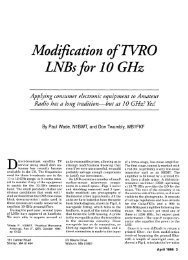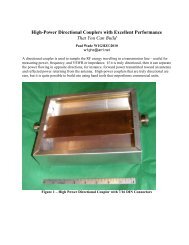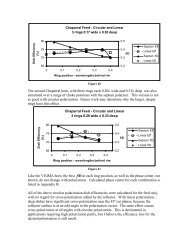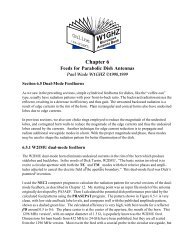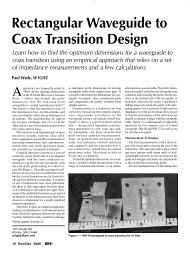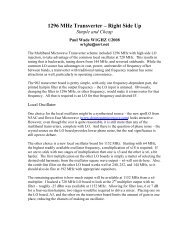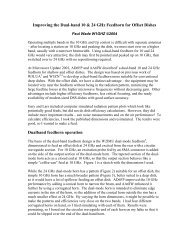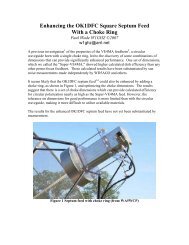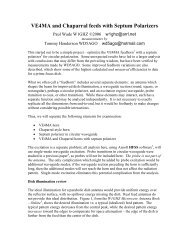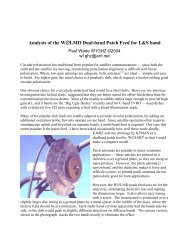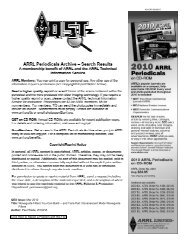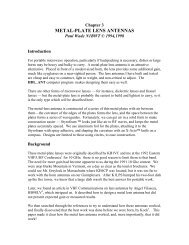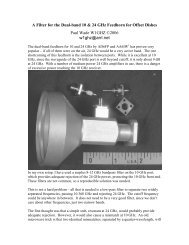Multiband Microwave Transverters for the Rover - W1GHZ
Multiband Microwave Transverters for the Rover - W1GHZ
Multiband Microwave Transverters for the Rover - W1GHZ
- No tags were found...
You also want an ePaper? Increase the reach of your titles
YUMPU automatically turns print PDFs into web optimized ePapers that Google loves.
Using <strong>the</strong> free PCB layout software from ExpressPCB 4 , I transferred <strong>the</strong> filter layout ontoan oscillator board. When I finally got some prototype boards, I cut one up to test <strong>the</strong>filters. I tested <strong>the</strong> filter first with 33 pf microwave capacitors; it worked as predicted,with about 5 dB of loss. The passband covered 240 MHz, but <strong>the</strong> center frequency was abit higher. Then I switched to cheap (less than $.07 each) chip capacitors from Digikey,using two small 18-pf caps (0805 size) in parallel on each resonator. It worked perfectly,as shown in Figure 6, centered around 240 MHz, with perhaps slightly lower loss thanwith <strong>the</strong> microwave capacitors. Note that larger (1206 size) chip capacitor packages havehigher ESR and ESL, so will probably not work as well. Even smaller (0603 size) oneshave lower predicted resistance, so <strong>the</strong> loss should be slightly lower, but <strong>the</strong>y are harderto handle.Printed Combline Filter <strong>for</strong> 240 MHz0-10Insertion Loss (dB)-20-30-40-50-60MeasuredSimulated-700 100 200 300 400Frequency (MHz)Figure 5It might have occurred to you already that this filter is not fixed at one frequency, but isusable over some range by changing capacitors. The calculated tuning curve is shown inFigure7. Feel free to give it a try if you need a different frequency. I wouldn’trecommend <strong>the</strong> steep part of <strong>the</strong> curve at <strong>the</strong> left.Figure 6



